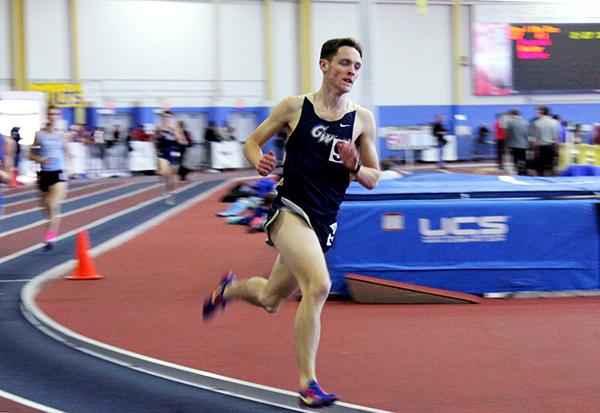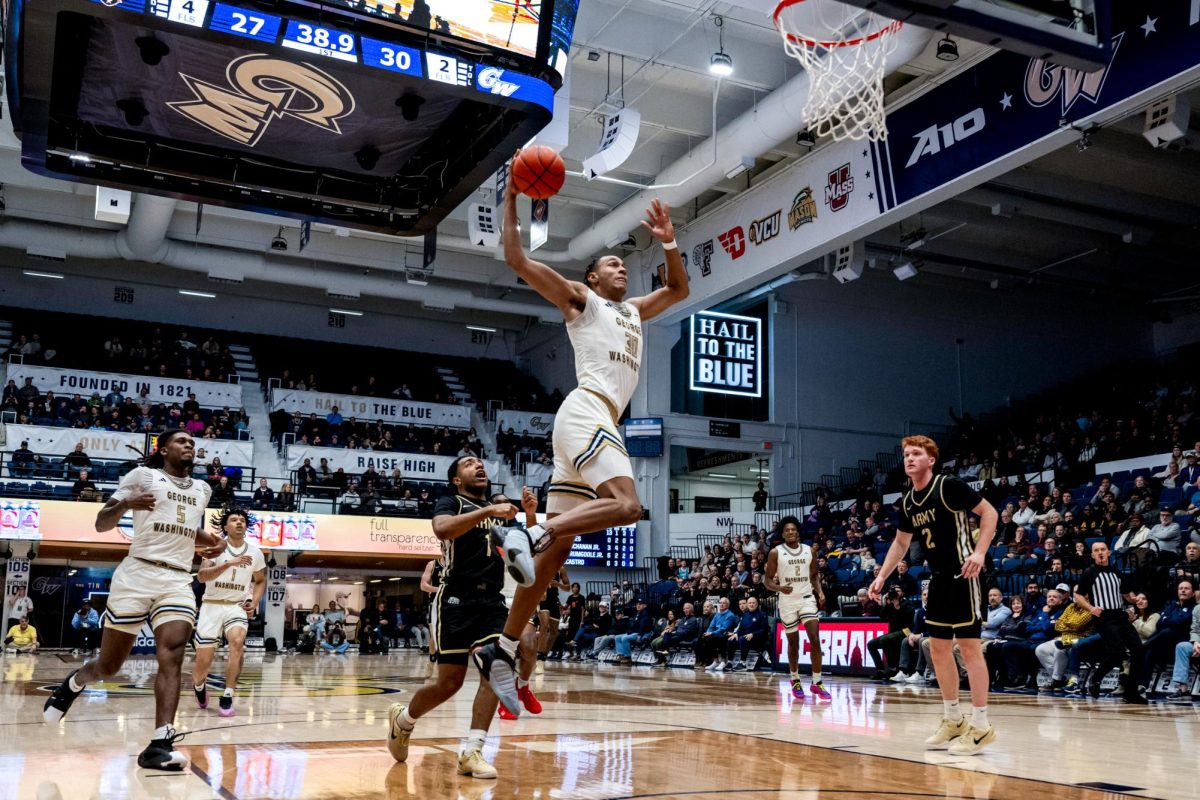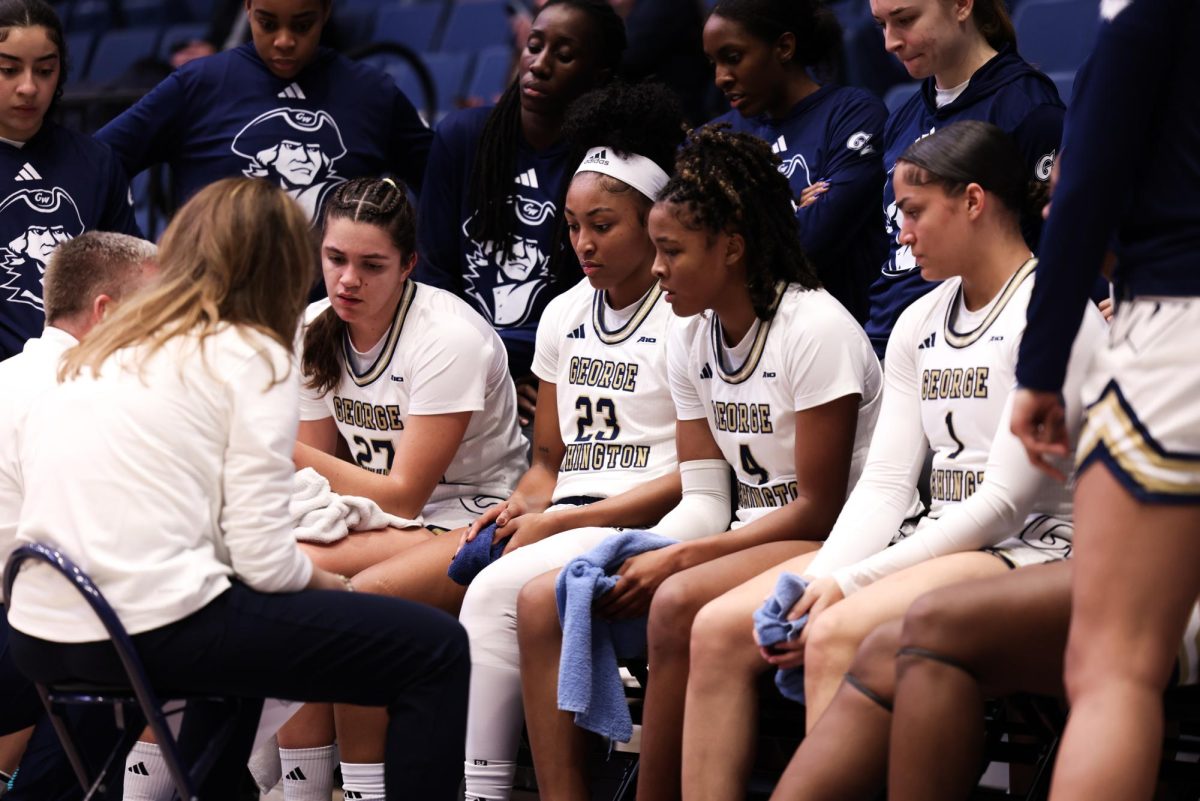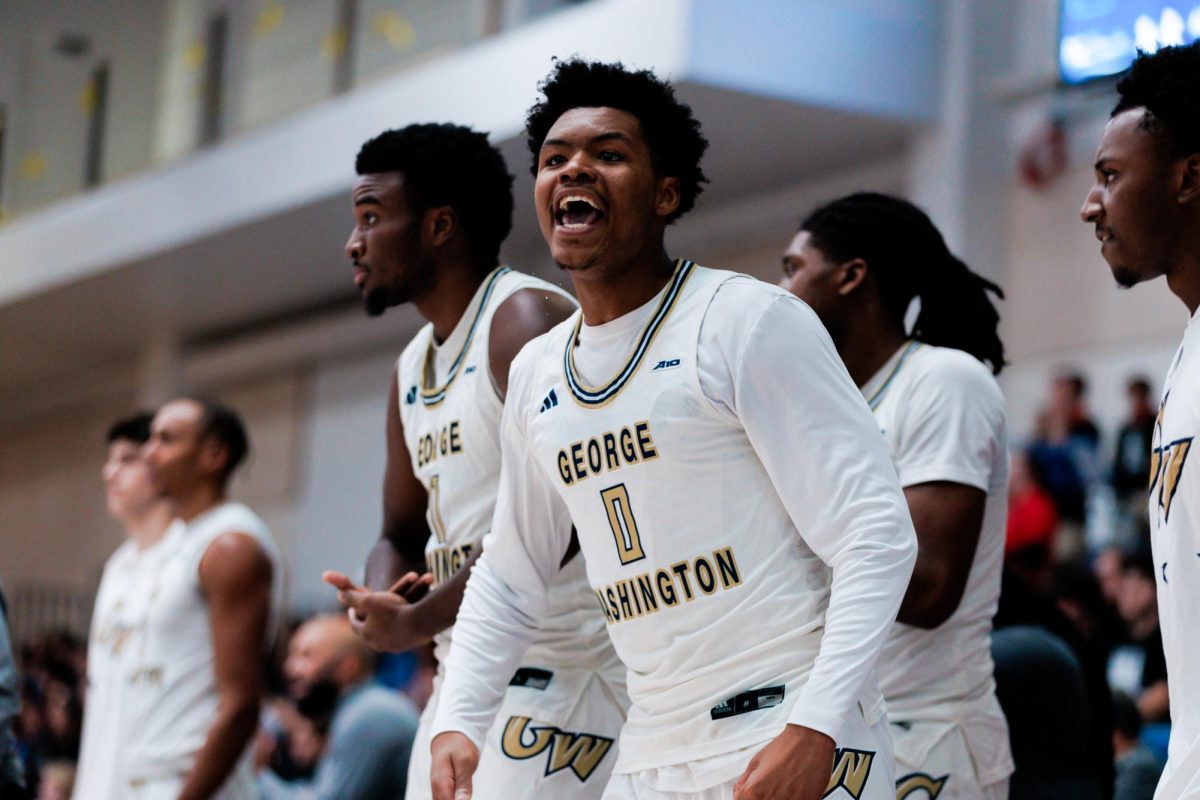GW has a track team.
Ask members of the small squad sporting new swag on campus and they might roll their eyes at you, give a whole-hearted chuckle and then explain, yes, GW reinstated track after 86 years.
But where’s the track?
“Probably the most common question I get it is, ‘Oh, are we building a track?’ And the answer is ‘no, we are not,’” sophomore Seamus Roddy said.
That doesn’t bother Roddy, though. Rather, it’s been a rallying point for a team that’s been extinct longer than GW football. The last time the Colonials rounded circles competitively was 1929.
Now, in their first year as a team, the upstart group has found a home at the Georgetown community track, a couple miles north of Foggy Bottom. The track is a humble 300 meters, and from the fourth and final lane, it still doesn’t gear up to the standard quarter mile. It’s overshadowed on the north side by Georgetown row houses and littered with orange cones knocked on their sides. A long jump pit is the host of dead grass and muddy winter dirt.
“It’s like a chip on our shoulder, kind of like an underdog story,” freshman Charles Arnold said. “Because we’re out here training in like 20-degree weather on the Georgetown public track that’s not even 400 or 200 meters.”
This past Saturday, GW competed in its second track meet of the season, following a pre-winter break meet at Navy. It was the first meet for the women, out at the Prince George Sports Complex next to FedEx Field. The six of them, five men and one woman, spent the day running one race apiece, split between the mile and the 3,000-meter run.
One of the five men had a top-eight finish, the minimum result to get points in a scoring meet, with freshman Connor Day coming in sixth out of 26 runners in the mile. Graduate student Hannah Rowe came in second out of 29 in her 3,000-meter run.
It was a groundbreaking of sorts for the team. While cross country has been around for a while at GW, the program has struggled to develop a running culture for athletes who want to run all year round.
But the new program has already been a draw. Freshman Luke Dublirer was tempted to go to school in a warm climate, perhaps in California or Miami at schools that had year-round programs, but chose GW when he heard about the reinstatement.
Arnold, from Melrose, Mass., had never run cross country. He chose to come to GW independent of the sport, as just a university in a city he enjoyed, and headed down to D.C. with his mother for one last revisit to confirm his choice.
When Arnold approached head coach Terry Weir to ask if he could try his luck on the cross country trails, Weir had a welcome surprise for him.
“It was exciting when I heard there was a track program because this is what I’m used to,” Arnold said.
Weir then offered him a spot as a walk-on. On Saturday, Arnold competed in the mile – his first race since high school, since he, like many of the other freshmen, declared a redshirt for the cross country season.
Arnold didn’t finish with the front pack of the race, clocking in 16th out of 23 runners, but still ran a time close to his best from high school. It was the first race since break, and the first overall for some of the athletes, which assistant coach Chelsea France said made it a “rust-buster.”
She’s in her first year too. Though a strong cross country runner in her days at Virginia, France also knows her track. She was manager and volunteer assistant at South Carolina last year while completing her graduate degree. But after finishing up at the SEC track heavyweight, France is helping Weir build a program from the ground up.
Right now, there are almost exclusively mid-to-long distance runners on the track team, which Arnold described as “very literally, it’s our cross country team plus a few other guys.”
France said they are currently looking to compete in the 400-meter race and up, including a 1,600-meter relay and 60-meter high hurdles, but said the goal down the road is to have a full track and field team with sprinters, throwers and jumpers to complement the distance runners.
“The whole point of adding indoor and outdoor track was to develop the entire program,” she said. “We just don’t want to focus on distance and mid-distance. We want to give everybody an opportunity and see that our program develops so that we can win an Atlantic 10 conference championship.”
It will be tough to transform the current hodgepodge of athletes, a rogue band competing without a real practice facility, into the type of program that could win a conference championship, especially with the current number of eight scholarships among the 33 roster members of men’s and women’s cross country, indoor and outdoor track.
France said the team still has the same number of scholarships as it did prior to adding track and field, though she also raved about the initial investment in rekindling the program, and an athletic department spokesman said in an email that additional scholarships would be considered on a “case-by-case basis.”
“We’re trying to be patient,” France said.
For now, the Colonials face a two-mile warm-up to practice on a 300-meter community track in the heart of Georgetown. It’s an uphill run to the four-lane circuit, but no one seems to mind.
“When we look back on this in two years, we’re going to say this really shaped us, being kind of a fledgling team that was trying to get better. That shapes us,” Roddy said.







